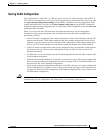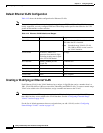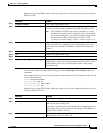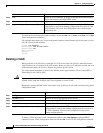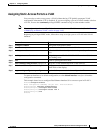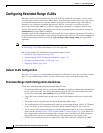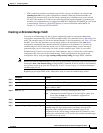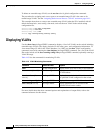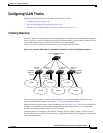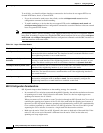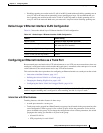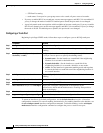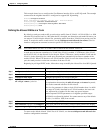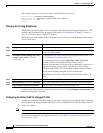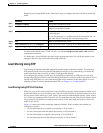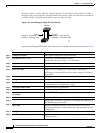
14-15
Catalyst 2950 Desktop Switch Software Configuration Guide
78-14982-01
Chapter 14 Configuring VLANs
Configuring VLAN Trunks
Configuring VLAN Trunks
These sections describe how VLAN trunks function on the switch:
• Trunking Overview, page 14-15
• 802.1Q Configuration Considerations, page 14-16
• Default Layer 2 Ethernet Interface VLAN Configuration, page 14-17
Trunking Overview
A trunk is a point-to-point link between one or more Ethernet switch interfaces and another networking device
such as a router or a switch. Fast Ethernet and Gigabit Ethernet trunks carry the traffic of multiple VLANs
over a single link, and you can extend the VLANs across an entire network.
Figure 14-2 shows a network of switches that are connected by 802.1Q trunks.
Figure 14-2 Catalyst 2950, 2900 XL, and 3500 XL Switches in a 802.1Q Trunking Environment
You can configure a trunk on a single Ethernet interface or on an EtherChannel bundle. For more
information about EtherChannel, see Chapter 27, “Configuring EtherChannels.”
Ethernet trunk interfaces support different trunking modes (see Table 14-4). You can set an interface as
trunking or nontrunking or to negotiate trunking with the neighboring interface. To autonegotiate
trunking, the interfaces must be in the same VTP domain.
Trunk negotiation is managed by the Dynamic Trunking Protocol (DTP), which is a Point-to-Point
Protocol. However, some internetworking devices might forward DTP frames improperly, which could
cause misconfigurations.
Catalyst 6000 series
switch
Catalyst
2900 XL
switch
Catalyst
3500 XL
switch
Catalyst
2950
switch
Catalyst
3500 XL
switch
VLAN2
VLAN3VLAN1
VLAN1
VLAN2
VLAN3
802.1Q
trunk
802.1Q
trunk
802.1Q
trunk
802.1Q
trunk
44962



